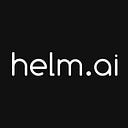Autonomous driving companies relying on fleet data, human-annotated data and simulations to scale are doomed to fail.
Let’s unpack that.
For more than a decade autonomous driving companies have poured billions of dollars on assembling fleets of vehicles to better understand driving patterns, pedestrian behaviors and many other data points. Armies of human annotators have been recruited to manually annotate data and assess simulations for many more billions. Many, if not most, still struggle to adapt to corner cases and are overfitted to specific environments, yet continue to attract substantial investments because people conflate access to fleet data to the ability to learn from it.
Following a recent conversation with Helm.ai independent research and advisory firm Lux Research noted that “one reason why the AV industry has walked back promises of fully autonomous vehicles being widely deployed in the early 2020s” was major players in the software space “approaching a point where the value of additional data is diminishing,” due to the high cost of annotation in the Supervised Learning methodologies. Other experts, including Guidehouse Insight analyst Sam Abuelsamid have also weighed in on this topic.
At Helm.ai, we believe this focus on fleet data and Supervised Learning is wholly unsuited to meet the needs of autonomous driving and that there’s a reason why so many autonomous driving companies relying on this approach have shuttered following major investments — they simply can’t scale.
Deep Teaching is the key to robust, scalable automation.
With Deep Teaching, we’re producing generalized AI that continually trains itself via Unsupervised Learning without human annotation or simulation. We’re constantly advancing the generalization of our AI by exposing our system to lots of different environments, picking challenging roads we’ve never experimented with before and quantifying the software’s performance to determine how to make it more robust. Previously described by Forbes as the ‘Android Of Self-Driving Cars’, Deep Teaching is allowing Helm.ai to build an AI which is rooted in unsupervised learning, thus being up to 100,000X more capital efficient than traditional approaches.
While autonomous driving systems based on Supervised Learning will remain brittle, struggling with corner cases at every other turn, Helm.ai’s technology is designed from the ground up for perception and to adapt to changing conditions — rain, fog, glare, missing lane markings and beyond. Furthermore, because Helm.ai’s software is hardware agnostic we’re able to accommodate the changing architectures and implementation plans of our customers with ease. At a time when many fleets have been relegated to parking lots due to COVID-19 the Helm.ai team has been able to continue development of our technology at a record-breaking pace.
Helm.ai recently sat down with The Robot Report to share more on Deep Teaching, details on how we’ve implemented our technology so far and some of the opportunities we’re seeing on the horizon. Be sure to check out The Robot Report’s full article, follow Helm.ai on YouTube and Twitter if you haven’t already and stay tuned — we’ll be making some exciting announcements in the coming weeks.
